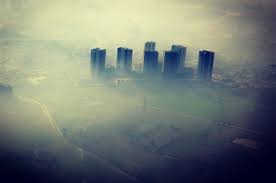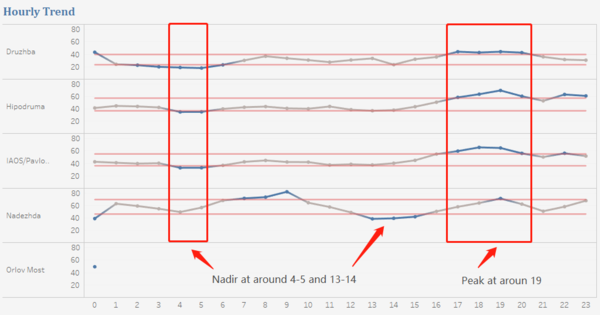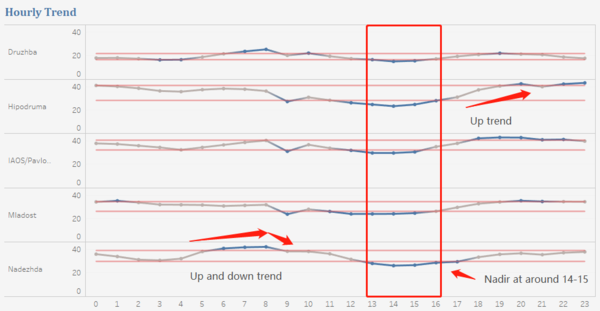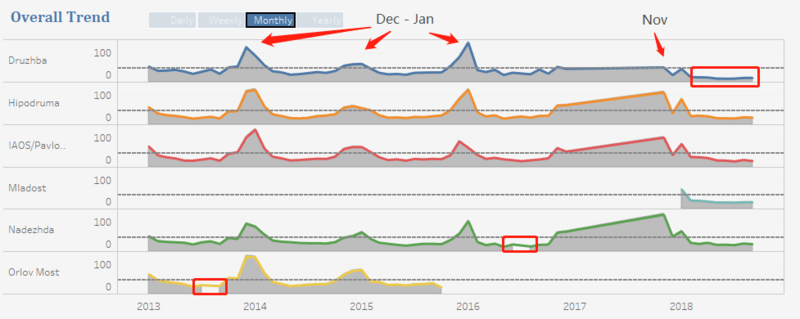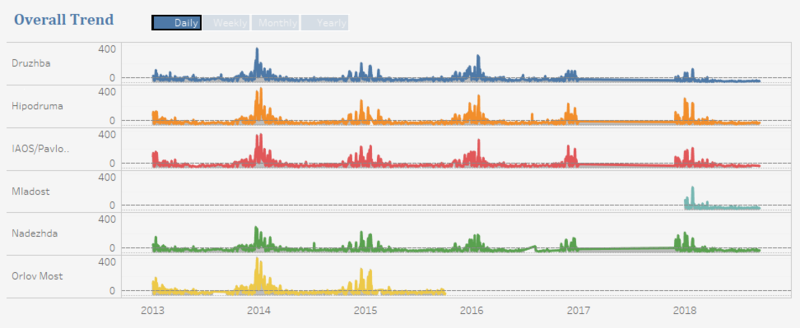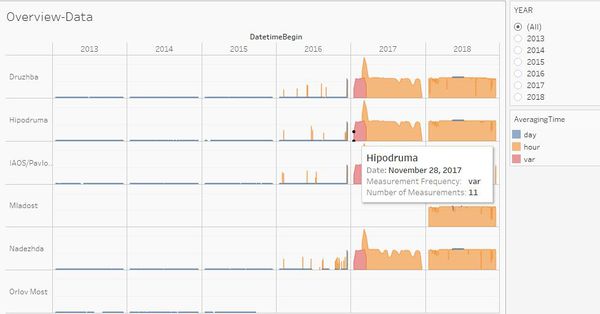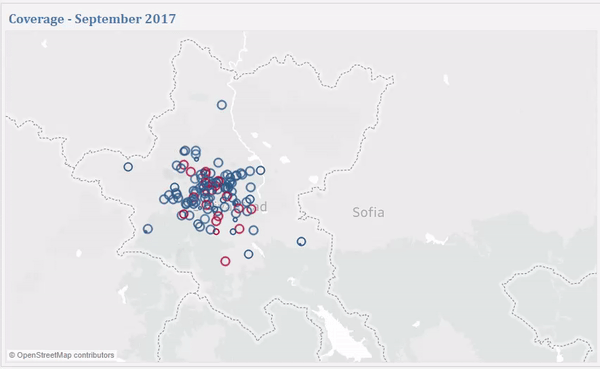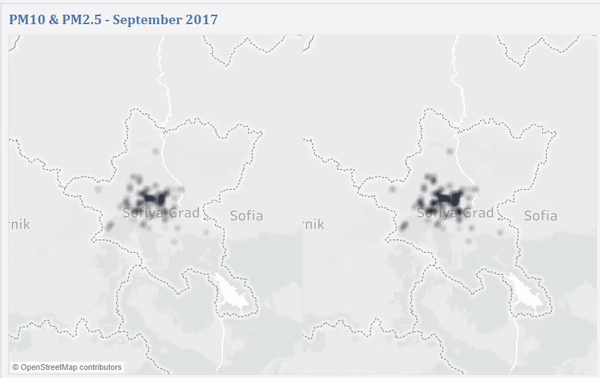ISSS608 2018-19 T1 Assign Qiao Xueyu Insights
|
|
|
|
|
|
Contents
Official Air Quality Measurements
A Typical Day
Past
The graph on the right shows the hourly trend from 2013 to 2017. Sicne we dont have enough houghly data during this period, the hourly trend reflects mainly the concentration of the last month of 2017. From the graph we can notice that the PM10 concentration reaches to a nadir at around 4-5 and 13-14 and to a peak at around 19 on average. And among the four stations that have daily data, readings from the station of Druzhba are lowest on average, whose lowest readings are about half of other stations' lowest concentration and highest readings is a bit higher than other stations' lowest readings. |
Recent
The graph on the right shows the hourly trend in 2018. From the graph we can notice that the PM10 concentration reaches to nadir at around 14-15 and to a peak at around 9 and 19-20 on average. In this graph, the station of Druzhba also reads the lowest concentration on average while Nadezha and Hipodruma read the highest concentration. The hourly PM10 concentration readings of 2017 and 2018 follow a similar overall trend. |
Continuous Trend
The graph on the right shows the continuous weekly trend from 2013 to 2018.
In the previous hourly trend we noticed that the station of Druzhba always reads a lower concentration, but from this graph with the data from 2013 to 2016, we can find the difference between each station is quite small, and Druzhba only reads a lower concentration in December.
We can also notice there're some time periods without data.
From the graph we can notice that the PM10 concentration peak occurs in December and January from 2014 to 2016, November in 2017 and January in 2018. However, the concentration in the winter of 2015 is much lower than other peaks and the concentration of December 2017 is also abnormally low.
If we deep further to view the daily trend, we can notice that the concentration starts to grow from the first several day of November in each year. And although there're some days with high concentration, most days' daily concentration is within the range of EU standard daily PM10 concentration plus/minus one standard deviation.
Operation of Stations
| First, as mention in the Data Exploration part, we only have daily data from 2013 to 2015, hourly data from the end of November in 2017 onwards. Missing data affect us explore the hourly trend before the end of November in 2017. And we found some interesting trends from the analysis above, we would be able to better validate the findings if we have more historical data. And we can also notice that before November 28 there is no data in the year 2017, which also affects our analysis. |
Citizen Science Air Quality Measurements
In the phase of data exploration and preparation, we found the sensors cover not only Sofia City so excluded the sensors outside the city.
The graph above shows the coverage of citizen sensors in the Sofia City. The color of circles represents the percentage of anomalies where red indicates high percentage and the size of circles represent the number of records/measurements.
First, it's obvious the citizen sensors mainly cover the center-east region of Sofia City. And if we click the play button to view the change over time, we can notice: firstly, the number of sensors increased over the time period and not all the sensors operate all the time; secondly, there're some sensors keep present to be red which means they keep giving anomalies. Given that the anomalies include not only PM10 and PM2.5 but temperature, humidity and pressure, some sensors cannot give normal PM2.5 and PM10, and some sensors cannot give normal temperature, humidity or pressure.
